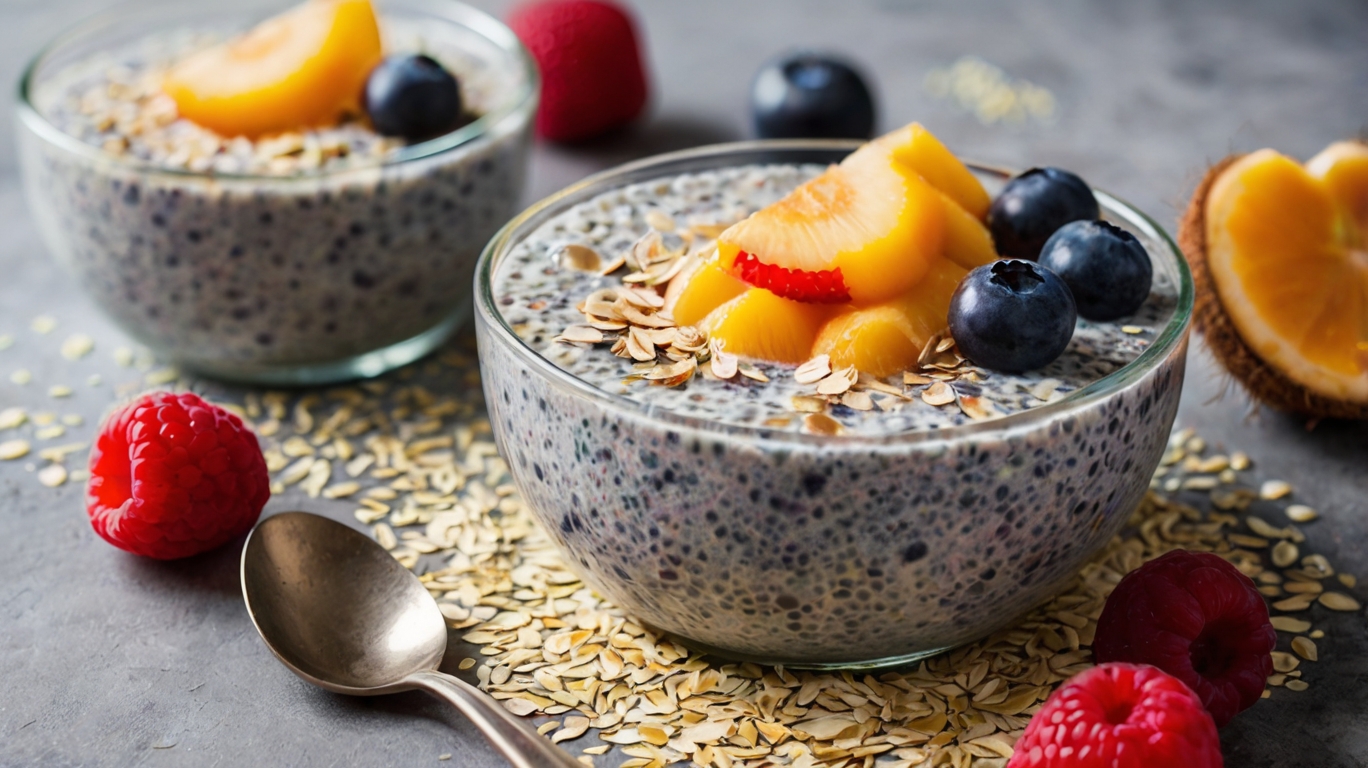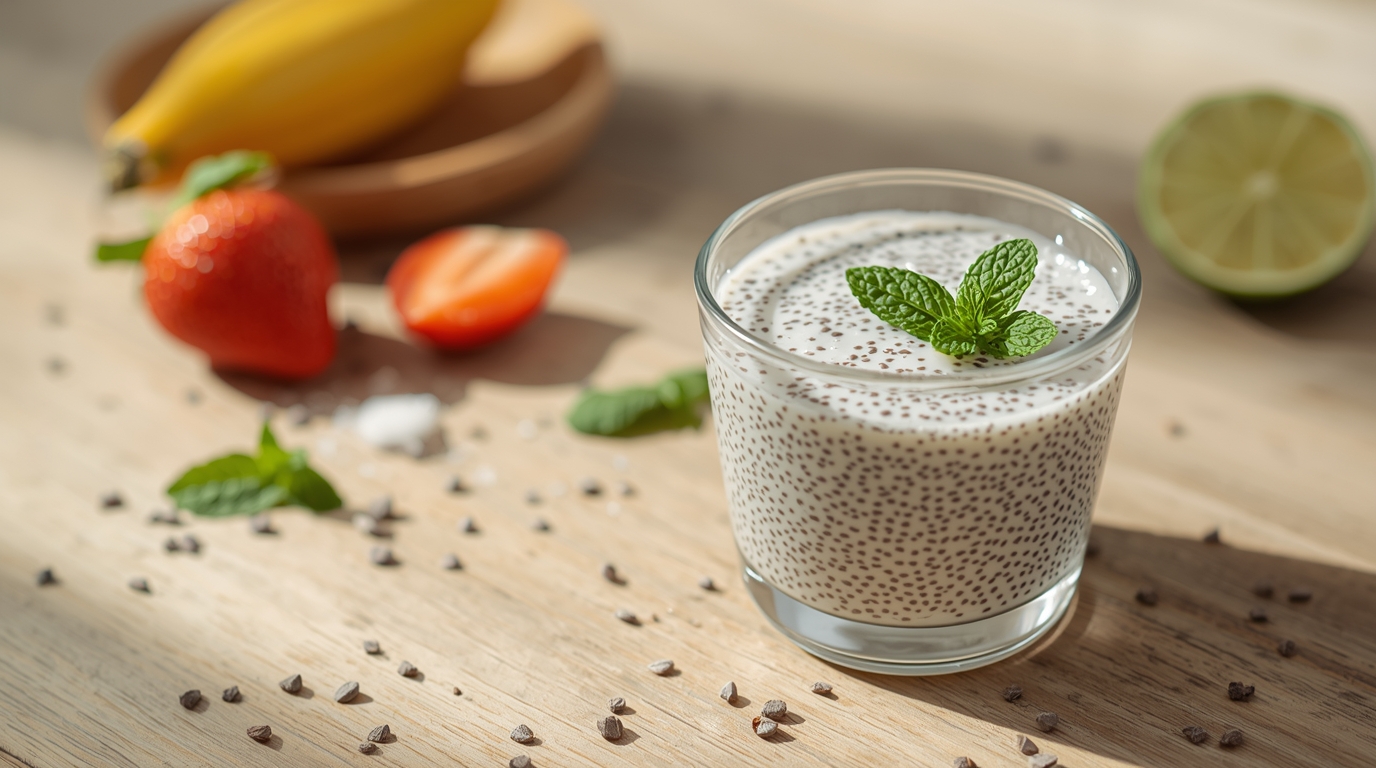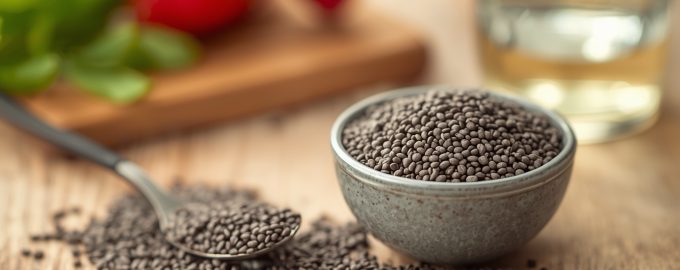Chia seeds are small grains of the plant Salvia hispanica, originating from Central and South America. Even the ancient Maya and Aztecs considered them a source of energy and strength — the word “chia” in the Nahuatl language means “strength.” Today, chia seeds have regained popularity thanks to their unique properties and rich composition.
The chia plant grows in warm climates — mainly in Mexico, Paraguay, Guatemala, and Bolivia. The harvest is collected once a year when the seeds are fully dried on the stems. They are carefully separated, cleaned, and naturally dried, after which they are ready for consumption.
Nutritional value and composition of chia seeds (per 100 g)
| Component | Amount |
|---|---|
| Calories | 486 kcal |
| Protein | 16.5 g |
| Fat | 30.7 g |
| Carbohydrates | 42.1 g |
| Dietary fiber | 34.4 g |
| Calcium | 631 mg |
| Magnesium | 335 mg |
| Phosphorus | 860 mg |
| Potassium | 407 mg |
| Iron | 7.7 mg |
| Zinc | 4.6 mg |
| Omega-3 fatty acids | 17.8 g |
| Omega-6 fatty acids | 5.8 g |
Health benefits of chia seeds
Chia seeds are rich in fiber, plant-based protein, and Omega-3 fatty acids, which help normalize metabolism and reduce levels of “bad” cholesterol. Thanks to their high antioxidant content, chia seeds protect body cells from aging and inflammation.
- improved digestion and gentle intestinal cleansing;
- normalization of blood sugar levels;
- support for the cardiovascular system;
- strengthening of bones and joints;
- enhanced endurance and concentration.
Chia seeds for weight loss
The main secret of chia for weight loss is their ability to absorb water and expand in volume by 10–12 times. When entering the stomach, they create a feeling of fullness and help reduce appetite without reducing energy.
The high fiber content improves metabolism and stimulates gentle toxin elimination. Omega-3 fatty acids regulate leptin and insulin levels, which affect hunger and fat burning.
In addition, protein from chia seeds helps preserve muscle mass during weight loss — especially important when calories are restricted.
How to take chia seeds for weight loss
The optimal daily dose is 1–2 tablespoons of seeds (15–25 g). They can be added to water, yogurt, smoothies, or porridge. To improve absorption, it is recommended to soak the seeds beforehand.
It is important to drink enough water — at least 1.5–2 liters per day, as chia seeds actively absorb liquid.
Contraindications
- individual intolerance;
- tendency to low blood pressure;
- taking anticoagulants (may enhance their effect);
- pregnancy and breastfeeding — only after consulting a doctor.
3 simple ways to prepare chia seeds for weight loss
1. Chia water
Add 1 tablespoon of seeds to a glass of water (250 ml), stir, and leave for 20 minutes. Drink 30 minutes before meals to reduce appetite.
2. Chia yogurt

Mix 2 teaspoons of chia with 200 ml of natural yogurt, let it sit for 15–20 minutes. You can add some berries or cinnamon.
3. Chia pudding

Mix 2 tablespoons of seeds with 200 ml of plant-based milk (almond or coconut), leave in the fridge overnight. In the morning, add fruits or nuts.
Scientific studies
- University of Toronto (Canada, 2009): researchers studied the effect of chia on blood sugar and lipid levels in people with type 2 diabetes. After 12 weeks of consumption, triglycerides decreased by 20% and glycemic control improved.
- American Journal of Clinical Nutrition (2012): scientists examined whether chia contributes to weight loss. Daily intake of 25 g of chia for 12 weeks moderately reduced body weight, but significantly improved cholesterol and blood pressure levels.
- National Institute of Nutrition of Mexico (2015): the study showed that regular consumption of chia reduces inflammatory markers and improves metabolism.
Sources
- Harvard T.H. Chan School of Public Health – Nutrition Source: Chia Seeds
- National Center for Biotechnology Information (NCBI): “Chia seeds and human health: An overview”
- American Journal of Clinical Nutrition, 2012
- University of Toronto, Department of Nutritional Sciences
Frequently Asked Questions about Chia Seeds
What are chia seeds?
Chia seeds are small seeds from the plant Salvia hispanica, native to Mexico and Guatemala. They are known for their high content of omega-3 fatty acids, fiber, and antioxidants.
How should chia seeds be consumed?
Chia seeds can be added to yogurt, smoothies, porridge, or consumed as a water soak. It is recommended to soak them in water for 10–15 minutes for better absorption and to prevent choking hazards.
How much chia seeds can I eat per day?
The optimal daily dose is 15–25 g (1–2 tablespoons). This provides about 70 calories, 5 g of fiber, and 2.7 g of omega-3 fatty acids.
Can chia seeds help with weight loss?
Yes, because of their ability to absorb liquid and expand in volume, chia seeds create a feeling of fullness, reduce appetite, and stimulate metabolism.
Can chia seeds cause side effects?
When consumed excessively without enough water, chia seeds may cause constipation or discomfort. Start with small doses and gradually increase.
Can chia seeds be consumed by people with diabetes?
Chia seeds may help control blood sugar levels thanks to their fiber and omega-3 content. Consult a doctor before regular consumption.







